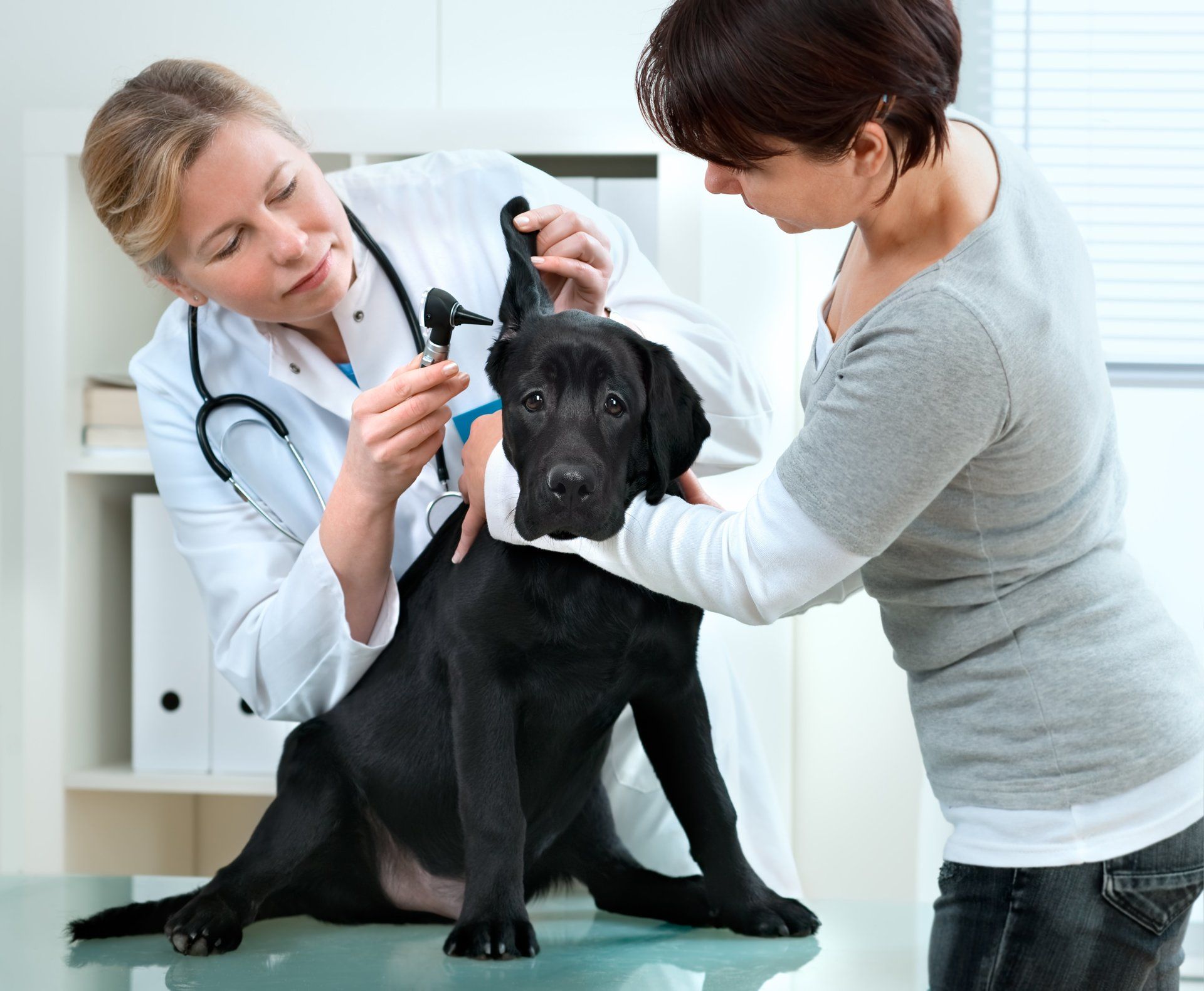General health information
Hello "dogger" ... health info
In the animal world, some subjects come into the world carrying diseases, it is not an everyday disease like otitis, gastroenteritis for example, but we will speak of congenital disease, more or less strict.
These affections have very often developed, intra-uterine, on the suffering subject. While some external factors may be responsible (drugs, chemical substances, given to the mother during gestation, bacterial infection, or especially viral), a large majority of them is genetic.
We will then speak of hereditary diseases: the genes are transmitted from generation to generation developing these diseases over time.
They can affect almost all the organs, if some are rare, others are frequent, even with a frequency that is too worrying.
In addition, some diseases are common to all breeds, but others are specific, here we will mainly talk about the main traits that concern the Labrador. These diseases are screened on our Labradors, at Sweet Loving Labs, and those of our partners to minimize the risks (zero risk does not exist) during reproduction.
Most of its hereditary diseases are now well known by veterinary medicine, which is able to offer screening through radiography, or genetic testing, or even clinical examination for a good number of them.
The purpose of these screenings is to exclude affected subjects from reproduction in order to reduce their number.
Osteo-articular pathologies
The
hip dysplasia is ajoint deformity hindquarters causing lameness. It is transmissible but does not necessarily pass from one generation to another.
The elbow dysplasia is a pathology that is still poorly understood and underestimated. The consequences are more serious than that of the hip. The diagnosis is often difficult, and made too late, which leads to an almost impossible cure and disabling consequences. It results from a malformation of one of the components of the joint . When a joint is dysplastic, the movements carried out are subjected to abnormal mechanical stresses causing premature wear, then the destruction of the cartilages and the bone extremities leading to the formation of osteoarthritis lesions.
The clinical examination consists of taking x-ray images, at a veterinarian's, under deep sedation. These x-rays will help determine whether there is a malformation or not. Then these shots, for breeding subjects, are sent for reading to a breed specialist veterinarian, who will decide on the condition of your animal's hips and/or elbows by assigning it a letter per member from A to E for the hips. Dogs rated from D will be excluded from breeding.
- Grade A: no damage to the joint, perfect position
- Grade B: Intermediate stage
- Grade C, D and E: mild, moderate and severe dysplasia with signs of osteoarthritis for the last 2.
And a grade will also be assigned to the elbow:
- Grade 0 = normal elbow unharmed dog
- Grade SL: borderline stage, has some defects
- Grade DC 1.2 and 3 are stages with mild, moderate and advanced osteoarthritis, with significant alteration of bone tissue for the last 2.
Ocular pathologies
Genetic diseases
Fighting against pathologies and in particular hereditary ones, must be at the heart of a breeder's concerns in order to preserve the breed. For the Labrador Retriever, the genetic diseases screened for are:
- Centronuclear Myopathy: MCN
It's about a muscular weakness associated with a lack of coordination of voluntary movements. The attacks vary according to the intensity.
- Narcolepsy: NARC
It is observed on a sudden loss of control of the hind legs , paralysis, consciousness is retained in most of the time. No postcritical period, duration 1 to 2 minutes.
- Retinal atrophy: APR-prcd
Retinal damage leading to blindness.
- Stress-Induced Collapse: IEC
A muscular weakness occurs as part of a effort . Syncope is possible but not systematic. Recovery takes 15 minutes.
- Nasal parakeratosis: HNPK
Located at the level of the truffle , This is' dermatosis characterized by the accumulation of dry, rough scales. It is observed by depigmentation, the appearance of crusts, and scales.
- Skeletal dysplasia: SD2
The subject is affected by dwarfism .
- Retinal dysplasia and OSD symdrome: DR/OSD
In Labradors, retinal dysplasia leading to blindness is often associated with skeletal disorders (dwarfism) in a syndrome called OSD (oculoskeletal syndrome).
Many laboratories offer screening tests to be carried out at the veterinarian using a swab. The tests will then be returned, and the owner will know if the dog is a carrier, healthy or not, or clear of everything. It will be appropriate that an affected subject should be excluded from reproduction, and to avoid reproducing healthy carrier subjects together.
The dimension of the hips in the Labrador
We often talk to you about Hips with letters, on the French side, and numbers with our Anglo-Saxon neighbors, it all depends on where you have your x-rays analyzed.
Here is a small comparison table, to help you find it...
Comparative table of English and French quotations
Great Britain - BVA France
From 0 to 4 A
From 5 to 8 B
From 9 to 106 CRC
Reading of radios, detail
Norberg angle > 105° A = Absence of hip dysplasia
From 100° to 105° B = Absence of coxo-femoral dysplasia Conformation Imperfecte
From 90° to 100° C = Discreet coxo-femoral dysplasia
Angle less than 90° D and E (in these cases the anomalies are clearly visible on the X-ray)












































































































